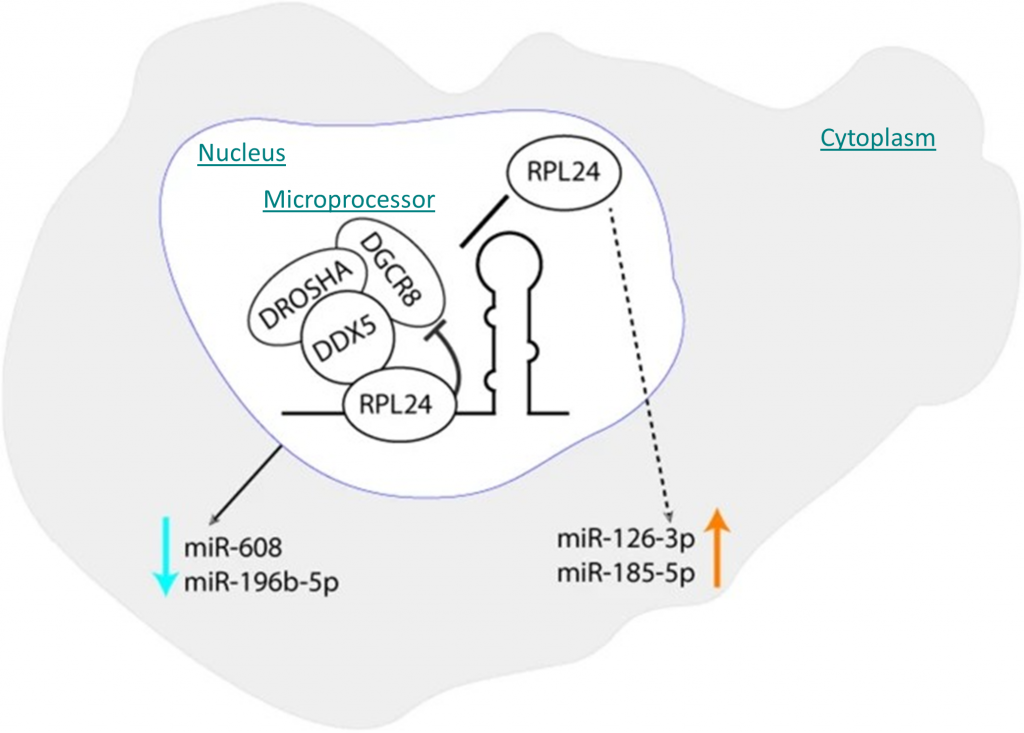microRNAs (miRs) are important regulators of gene expression, but the mechanisms regulating their expression and biogenesis are not fully known. The primary miR (pri-miR) transcript is formed in the cell nucleus and processed by the microprocessor complex, comprised of the core components DROSHA and DGCR8, and includes additional auxiliary factors such as the RNA helicases DDX5. The microprocessor-mediated cleavage produces the precursor miR (pre-miR), which later gives rise to the mature miR in the cytoplasm. In this paper, using both human and mouse derived cell lines, we discovered a new role in miR biogenesis of the ribosomal protein L24 (RPL24), a component of the ribosome which participates in translation. We show that RPL24 directly affects miR levels (such as miR-608 and miR-196b-5p) by binding to their pri-miR sequences in the nucleus, and it also inhibits their processing through direct interaction with DDX5 of the microprocessor complex. RPL24 also can affect miR levels indirectly, such as miR-126-3p and miR-185-5p. Previously, RPL24 had been shown to play a role in miR processing in the thale cress plant (Arabidopsis thaliana), and our findings here demonstrate a similar evolutionarily conserved novel function for RPL24 in mammalian miR biogenesis, and a novel extra-ribosomal role of RPL24 in primate miR regulation.

Figure 1:
RPL24 affects miR levels indirectly (e.g., miR-126-3p, miR-185-5p) and directly (e.g., miR-608, miR-196b-5p) by binding to their primary-miR sequences in the nucleus, by inhibiting their processing through interaction with DDX5 of the microprocessor, ultimately reducing their levels.


